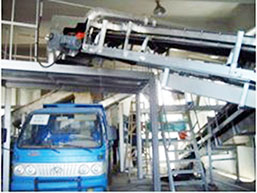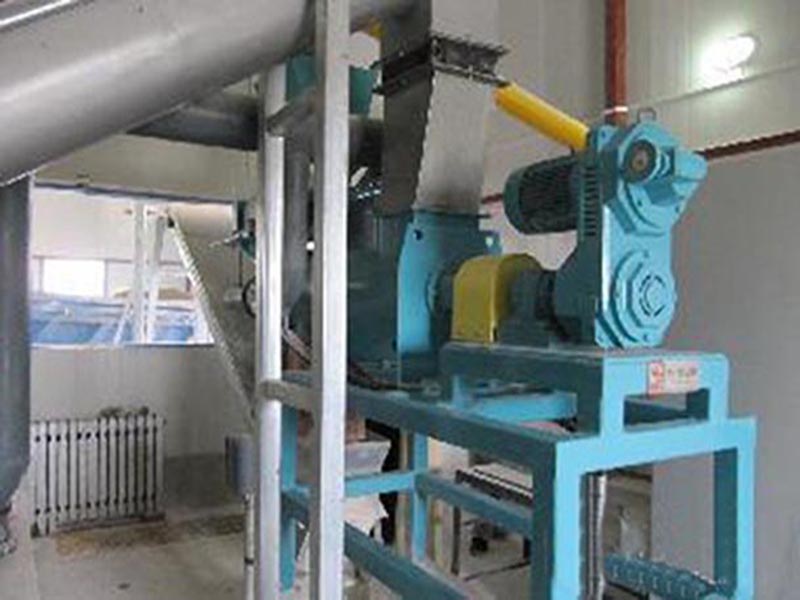Technical introduction
Spray dryer is the most widely applied machine in forming process of liquid and drying industry. It is the most suitable from the solution, emulsion, suspending liquid and pasty liquid raw material producing powder, granular solid products. Therefore, when the product particle size distribution, residual moisture content, bulk density and shape of the particles must meet the precision standard, the spray drying is an ideal process.
Materials:
Chemical industries: Sodium fluoride (potassium), alkaline pigment dyes, dye intermediates, compound fertilizer, formaldehyde silicic acid, catalyst, acid agent, amino acid, white carbon black
Plastic resin: AB, ABS emulsion, urea formaldehyde resin, phenolic resin, adhesive (urea) formaldehyde resin, polyethylene, polyvinyl chloride;
Food industry: Fat rich milk powder, cocoa powder, armpit prion, milk replacer, a blood meal, egg white (yellow) etc.
Food and plants: Oats, chicken juice, coffee, instant tea, seasoning meat, protein, soybean, peanut protein hydrolysate, etc.
Sugar: corn syrup, corn starch, glucose, pectin, maltose, potassium, potassium, etc. ceramic: alumina, ceramic tile material, Magnesium Oxide, talc powder and so on.
Advantages
A. Fast drying speed: after atomization, the area of materials is enlarged greatly; in hot air flow, 95% to 98% moisture can be evaported instantly; it only takes several seconds to finish drying process. it is especially suitable for thermal-sensitive materials.
B. This product is characterized by uniformity, flowability, solubility, high purity and good quality;
C. Simple production process; easy operation; can dry materials with 40% to 60% moisture to powder particles; no crushing and screening are needed after drying; production process is reduced; the purity of products is improved; the granularity, density and moisture can be adjusted by changing operation conditions. It is very convenient to control and manage.
Working principle
After being filtered and heated, air will enter air distributor on the top of drier; hot air enter drying chamber in spiral shape. Materials liquor is atomized into fine mist liquid beads which will flow with hot air. The liquid beads will be dried to finished products quickly. The finished product is continuously made from the bottom of the drying tower and the rotary dryer. Chemical industries: Sodium fluoride (potassium), alkaline pigment dyes, dye intermediates, compound fertilizer, formaldehyde silicic acid, catalyst, acid agent, amino acid, white carbon black. Plastic resin: AB, ABS emulsion, urea formaldehyde resin, phenolic resin, adhesive (urea) formaldehyde resin, polyethylene, polyvinyl chloride; Food industry: Fat rich milk powder, cocoa powder, armpit prion, milk replacer, a blood meal, egg white (yellow) etc. Food and plants: Oats, chicken juice, coffee, instant tea, seasoning meat, protein, soybean, peanut protein hydrolysate, etc. Sugar: corn syrup, corn starch, glucose, pectin, maltose, potassium, potassium, etc. ceramic: alumina, ceramic tile material, Magnesium Oxide, talc powder and so on.
Technical parameters
Model
project/parameterd |
5 |
25 |
50 |
150 |
200-2000 |
|
Inlet temperature |
140-350
Self control |
|
Outlet temperature |
80-90 |
|
Maximun evaporation amount(kg/h) |
5 |
25 |
50 |
150 |
200-2000 |
|
Centrifugal spray head drive mode |
Compressed air transmission |
Mechanical drive |
|
Highest rotation speed(r.p.m) |
25000 |
18000 |
18000 |
15000 |
8000-15000 |
|
Diameter of spray tray (mm) |
50 |
120 |
120 |
150 |
180-240 |
|
Heat source |
Electricity |
Steam, electricity |
Steam, electriciy, fuel oil, coal gas and hot air furnace |
|
Highest power of electricity heating(kw) |
9 |
36 |
72 |
99 |
|
|
Overall dimension(m) |
1.8×0.93×2.2 |
3×2.7×4.26 |
3.5×3.5×4.8 |
5.5×4×7 |
It’s up to real situation. |
|
Dry powder recycle(%) |
≥95 |
Notes: Evaporation capcacity is relevant to many elements. If there is any change in the paramter, we will not notice in prior.
Instructions for order:
1. Name of materials: solid content (moisture content), stickiness, surface tension and PH value;
2. Power volume, residual moisture content, granularity and highest temperature;
3. Output, opening time everyday;
4. Energy available: steam pressure, power volume; coal, oil and output;
5. Control request: temperature control of temperature of inlet and outlet;
6. Powder receiving requirement: install bag dust collector or not; tail gas emission request;
7. Other special requests;
Technical specifications
|
Size |
A |
B |
C |
D |
E1 |
E2 |
F |
G |
H |
I |
|
LPG-25 |
1290 |
3410 |
4260 |
1800 |
1200 |
1200 |
1000 |
1700 |
1300 |
1550 |
|
LPG-50 |
1730 |
4245 |
5100 |
2133 |
1640 |
1640 |
1250 |
1750 |
1800 |
1600 |
|
LPG-100 |
2500 |
5300 |
6000 |
2560 |
2100 |
2100 |
1750 |
1930 |
2600 |
1780 |
|
LPG-150 |
2800 |
6000 |
7000 |
2860 |
2180 |
2180 |
1970 |
2080 |
3050 |
1960 |
|
LPG-200 |
2800 |
6600 |
7300 |
3200 |
2300 |
2300 |
2210 |
2250 |
3050 |
2100 |
|
LPG-300 |
2800 |
8000 |
8700 |
3700 |
2800 |
2800 |
2520 |
2400 |
3040 |
2250
|
 中文
中文 English
English Home
Home









